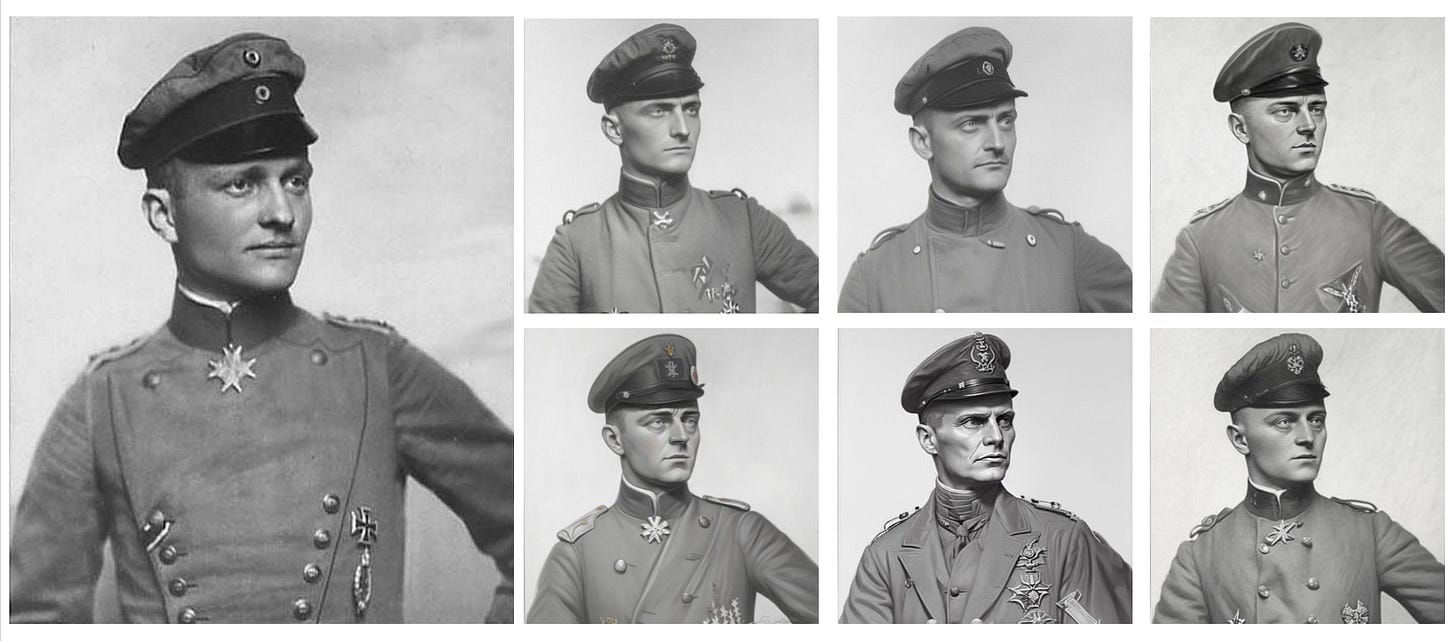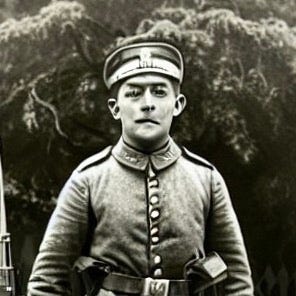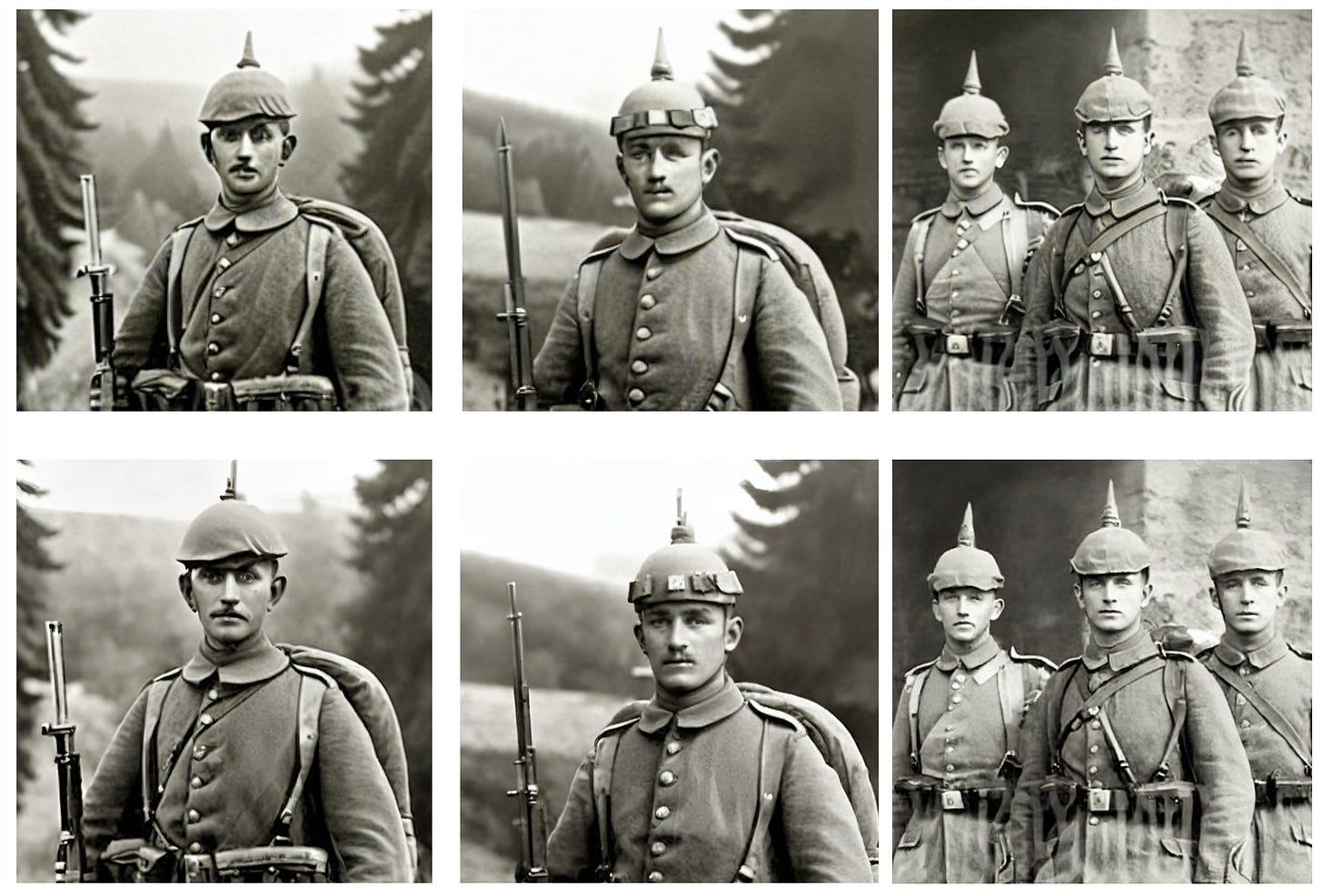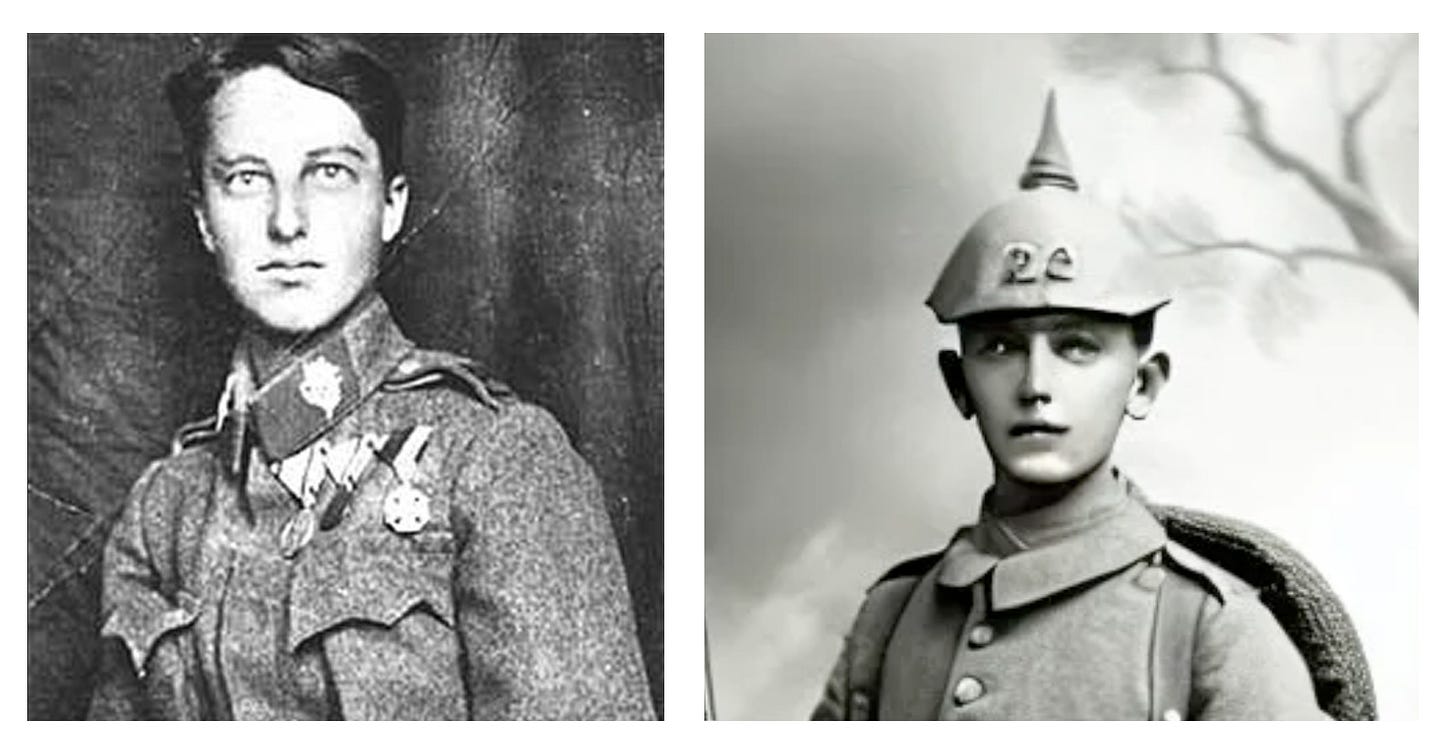What's wrong with this picture?
I asked an AI art engine to generate photos of German soldiers from World War I. The results were...interesting.
It’s long been my wish to produce “photographs” and other “historical evidence” to illustrate my article Germany’s Dragon Riders of the Great War, as well as a future feature about zombies on the Romanian front. With AI art gaining popularity, it seemed like the fulfillment of this wish might be within my grasp.
While the generation of AI text and art may seem like magic, the latter requires a surprising amount of skill. Nevertheless, even a beginner can produce something. Whether that something corresponds to the image that you had in your head is another question altogether. In any case, you begin by providing the AI engine with a written prompt that includes the characteristics of everything that you want the image to contain. (It doesn’t always work; prompt-writing is an art unto itself.) The engine can then generate an image from these words alone; alternately, an existing image can be used in tandem with the written prompt.
For my first attempt, I chose a photograph of Manfred von Richthofen—a German fighter pilot in World War I. My inexpertly written prompt consisted of “portrait of manfred von richthofen, german pilot, wwi, ww1, prussian junker, 30yo, tall coat collar, german military cap, iron cross, double-breasted coat.” Iteratively refining the prompt produced the following series of images.

To the unpracticed eye, these photos may pass first muster. While these men are clearly not Manfred von Richthofen, they might well be other World War I-era German pilots…or not.
Closer scrutiny reveals that these photos are fakes, and not very good ones at that. Most obviously, the AI struggled to recreate the jacket. It’s quite an accomplishment for our poor man to have done up the nonsensically-placed buttons. He also faced some challenges when it came to displaying his medals. Although he’s clearly decorated, the shapes and sizes of those medals have no basis in reality. The AI also insisted on creating a cap badge—the metal insignia pins that British soldiers wore on their caps. Germans, however, did not use cap badges. In short, there is no way that these photos show a German pilot.
To say that I was disappointed with the AI’s vision of Manfred von Richthofen would be an understatement. Perhaps, I thought, a more generic subject would improve the results. My new goal was to generate a photograph of German soldiers in the trenches. You be the judge:

Again we see that the AI tends strongly towards images of British soldiers; the helmets—though they may not be perfect likenesses of British Brodie helmets from that time—are certainly not the Stahlhelm or Pickelhaube that I specified in my prompts.
Another iteration produced helmets that at least look Stahlhelm-ish. However, the matte, blank quality of the helmets lends a feeling of wrongness to the photo. The rest of the uniform doesn’t stand up to closer scrutiny. Not to mention that the AI took the “trench” part of the prompt very literally and placed the men in a ditch—which, by the way, looks too densely populated for the scene to be real.
Other creators suffered from many of the same problems as I did. As you can see below, these soldiers have the same non-committal Stahlhelm design made of an imaginary material.

Meanwhile, the men in this formal group photo look as if they were photographed separately and then photoshopped into the same frame. Their questionable hats and facial expressions notwithstanding, the utter lack of emotional connection between them suggests that the photo is, in the very least, a composite if not a fake.

Given that I doubted anyone would be taken in by photos with such obvious shortcomings, I decided to train my own AI model to (hopefully) produce some less-obvious fakes. Fifteen half-length portrait photographs of German soldiers provided the training set.
In the first iteration of my model, I made several mistakes. In retrospect, I should not have included photos of several soldiers who wore glasses with frameless lenses. The AI did not understand how to interpret this style of glasses, with the result that many pictures featured men with distorted or sunken eyes.

The original training set contained photos of men who wore field caps and Pickelhaube. The AI then attempted to combine these styles of headgear. While the results were not as bad as one might imagine, they were not good, either. For the second iteration of the model, I therefore used only photos of soldiers with Pickelhaube, with better results.
However, the AI still struggled to generate decent human faces. For the most part, I managed to fix the zombie eyes and crooked mouths with a post-processing technique called upscaling. (There are also specialised face-processing engines that I haven’t experimented with yet.) However, upscaling is not without its own issues; although it gave faces to men who previously didn’t really have one, it also didn’t know what to make of the spikes on the Pickelhaube and so turned them into devices that vaguely resembled radio antennas.

A general problem with AI art engines is the sad fact that they have been overtrained on female figures. As a result, its impulse is to render men as women. Even though my model was finetuned with photos of male soldiers, it was still built on top of an original in which the training data overemphasised women. As such, the new model occasionally tried to turn young men into young women by softening their facial features and cinching their waists in an attempt to create hourglass figures.

The uniforms were also a mess. Even I, who can in no way be described as a uniforms expert, could detect clear signs that something was amiss: for example, the AI struggles as ever with button placement and sometimes treats the Pickelhaube’s spike as unrelated to the rest of the helmet. While I know nothing about guns or bayonets, I’m pretty sure that the AI is allowing itself some artistic license there too.
Although the pictures that feature in this article may not be particularly impressive to an expert, I believe that the general public would accept the better ones at face value. At the time of this writing, a total beginner cannot produce consistently convincing results using AI. However, better prompts, post-processing, and judicious human use of other AI tools & techniques would allow the pictures to withstand a higher level of scrutiny. With time and effort, I don’t doubt that it would be possible to create plausible scenes and soldiers from an AI version of the Great War that never happened.

